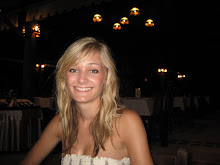 We also went to Bournemouth high street to film GVs of Skipton Building Society, to correspond to a bulletin concerning the bank. As a news story, it was in the interest of the public as the bank had revealed some customer’s bank details accidentally to others. This is another reason why TV is an appropriate medium to report the news; arguably pure storytelling of this news item without footage would have been fairly boring to an audience, whereas the pictures add interest as people can see exactly which building society was concerned. When we arrived back at university, I edited the pictures of the building society and scripted some national news bulletins.
We also went to Bournemouth high street to film GVs of Skipton Building Society, to correspond to a bulletin concerning the bank. As a news story, it was in the interest of the public as the bank had revealed some customer’s bank details accidentally to others. This is another reason why TV is an appropriate medium to report the news; arguably pure storytelling of this news item without footage would have been fairly boring to an audience, whereas the pictures add interest as people can see exactly which building society was concerned. When we arrived back at university, I edited the pictures of the building society and scripted some national news bulletins. We worked extremely well as a team, as we all met our deadlines and we were in the studio for a rehearsal an hour before we were broadcasting, with an abundance of pictures. Effective teamwork is essential, as we each rely on one another to make the programme a success. Today we were presenting the rolling news programme, and I was one of the presenters. After a few run-throughs, we corrected mistakes in the autocue. At the last minute, we received some breaking news which we included in the bulletin. By adding a story into the running order, this reset the autocue, which coincidentally reset all of the changes we had made. This unfortunately resulted in a few problems during the live broadcast, but overall the news programme went well.
We worked extremely well as a team, as we all met our deadlines and we were in the studio for a rehearsal an hour before we were broadcasting, with an abundance of pictures. Effective teamwork is essential, as we each rely on one another to make the programme a success. Today we were presenting the rolling news programme, and I was one of the presenters. After a few run-throughs, we corrected mistakes in the autocue. At the last minute, we received some breaking news which we included in the bulletin. By adding a story into the running order, this reset the autocue, which coincidentally reset all of the changes we had made. This unfortunately resulted in a few problems during the live broadcast, but overall the news programme went well.TV news programmes are more interesting as the news can be presented in a variety of interesting ways. One strength of the programme was that it covered a variety of news stories. The programme contained a mix of oovs, upsots, packages, a phone interview, and a third presenter who provided the background on the lead story on Alzheimer's disease. Accidentally, we left a symbol on the screen for the entire broadcast stating that the show was live, however the phone interview was pre-recorded and this would be seen as deceiving audiences.
The final news programme exceeded my expectations. I was concerned that we would not all be able to meet the deadline, however through working as a team we managed it. I am pleased that our group were in the studio so well in advance, although it was a shame we had a mishap with the autocue in the live broadcast.
> iNews 3rd Feb 2010 from Adam Parker on Vimeo.

No comments:
Post a Comment